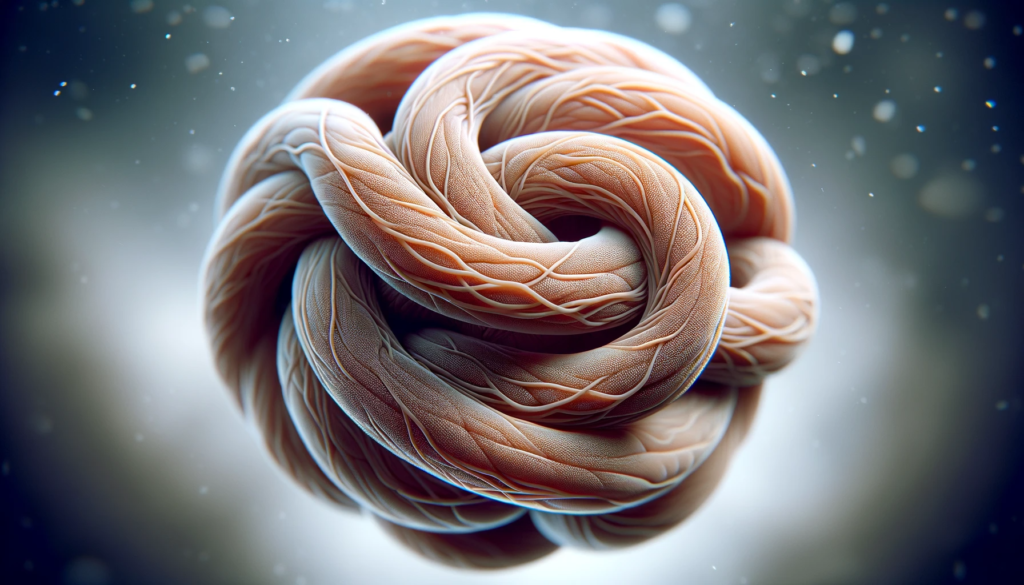
A true knot in the umbilical cord is a fascinating phenomenon that has intrigued scientists, medical professionals, and even spiritual individuals for centuries. This unusual occurrence happens when the baby somehow manages to tie a knot in the umbilical cord while in the womb. While most knots in the cord are false knots and pose no harm, a true knot can have serious implications for both the baby and the mother.
Despite its rarity, a true knot can pose dangers during pregnancy and childbirth. If the knot tightens too much, it can restrict the flow of blood and nutrients to the baby, potentially leading to growth restriction or even stillbirth. However, the presence of a true knot doesn’t always result in adverse outcomes. Many babies with true knots are born healthy and without any complications. This enigmatic occurrence has led to various superstitions and spiritual interpretations surrounding its meaning and potential symbolism.
In the following sections, we will delve deeper into the superstitions and spiritual significance associated with true knots in the umbilical cord. We will explore the diverse beliefs held by different cultures and religions, as well as the potential messages and interpretations attributed to this mysterious phenomenon. Whether you are curious about the connection between true knots and spiritual realms or simply interested in learning more about this captivating topic, this article will provide you with valuable insights to expand your understanding.
What you should know
1. True knots in the umbilical cord are rare occurrences that can pose risks during pregnancy and childbirth. These knots can restrict blood flow and oxygen to the fetus, potentially leading to complications such as fetal distress or stillbirth.
2. Despite their medical significance, true knots are often surrounded by superstitions and spiritual beliefs in various cultures. Some view them as a sign of good luck or special powers, while others interpret them as a warning of misfortune or a connection to a deceased loved one.
3. In certain spiritual and religious practices, true knots in the umbilical cord are considered sacred and may hold deep symbolic meaning. For example, they are sometimes believed to represent the interconnectedness of life or a spiritual bond between the mother and child.
4. Modern medical advancements have made it easier to detect true knots during prenatal ultrasound examinations, helping healthcare professionals monitor and manage potential complications. However, the presence of a true knot does not always indicate immediate danger, as some knots can be loose and allow for adequate blood flow.
5. It is essential for expecting parents to consult with healthcare professionals for appropriate prenatal care and monitoring. While true knots in the umbilical cord can be concerning, timely medical interventions and close monitoring can help minimize risks and ensure the well-being of both mother and baby.
What is the significance of True Knot in Umbilical Cord?
The True Knot in the Umbilical Cord is a rare occurrence that holds both superstition and spiritual meaning. This phenomenon happens when the umbilical cord becomes twisted and forms a knot during pregnancy. While it may seem like a simple physical occurrence, it holds a deeper significance for many cultures and belief systems.
The Superstitions Surrounding True Knot in Umbilical Cord
Superstitions surrounding the True Knot in the Umbilical Cord vary across different cultures and regions. In some cultures, it is believed that the presence of a True Knot signifies good luck and protection for the child. It is seen as a symbol of strength and resilience, as the baby was able to survive with this knot in the womb. On the other hand, some cultures view the True Knot as a bad omen, associating it with complications during childbirth or potential health issues for the child.
Despite the lack of scientific evidence supporting these superstitions, they continue to persist in various communities. It is important to note that these beliefs are deeply rooted in cultural traditions and should be respected, even if they may seem irrational to some.
It is crucial for expectant parents to consult with healthcare professionals to understand the true implications of a True Knot in the Umbilical Cord and to ensure the well-being of both the mother and the baby.
The Spiritual Meaning of True Knot in Umbilical Cord
From a spiritual perspective, the True Knot in the Umbilical Cord holds symbolic significance. It is often seen as a representation of the interconnectedness between the mother and the child, emphasizing the bond and the life force that flows between them. The knot serves as a reminder of the strong connection that exists between the physical and spiritual realms.
Some spiritual beliefs suggest that the True Knot represents the soul’s journey and the challenges it may face in life. It is believed that a child born with a True Knot has a special purpose or destiny to fulfill. This perspective views the knot as a symbol of resilience, strength, and the ability to overcome obstacles.
While the spiritual meaning of the True Knot may vary depending on individual beliefs and practices, it often serves as a reminder of the profound and mysterious nature of life itself.

1. What is a true knot in the umbilical cord?
A true knot in the umbilical cord is a rare occurrence where the umbilical cord becomes twisted and forms a knot. This knot can be either loose or tight, and it can potentially affect the flow of blood and nutrients to the developing fetus. True knots are estimated to occur in about 1% of pregnancies and are more common in multiple pregnancies or when the umbilical cord is longer than average.
2. What are the superstitions surrounding true knots in the umbilical cord?
There are various superstitions and beliefs associated with true knots in the umbilical cord. Some cultures consider it a sign of good luck or a blessing, believing that the knot represents a strong bond between the mother and the baby. On the other hand, some superstitions view true knots as a bad omen or a sign of potential complications during pregnancy or childbirth. These beliefs vary across different cultures and may have different interpretations.
3. Is there any scientific evidence supporting the spiritual meaning of true knots?
No, there is no scientific evidence supporting the spiritual meaning or significance of true knots in the umbilical cord. The interpretation of true knots as having spiritual or symbolic meanings is purely based on cultural beliefs and personal perspectives. Medical professionals and researchers focus on the physical implications of true knots, such as the potential risks they pose to the baby’s health, rather than attributing any spiritual or supernatural significance to them.
4. Can a true knot in the umbilical cord harm the baby?
In some cases, a true knot in the umbilical cord can potentially harm the baby. If the knot is tight, it may restrict the blood flow and oxygen supply to the fetus, leading to complications such as fetal distress or growth restriction. However, it is important to note that not all true knots pose a significant risk, and many pregnancies with true knots result in healthy babies. Regular prenatal check-ups and monitoring can help detect any potential issues and ensure appropriate medical interventions if necessary.
5. How is a true knot in the umbilical cord diagnosed?
A true knot in the umbilical cord is typically diagnosed during routine prenatal ultrasounds. The ultrasound can reveal the presence of a knot or any other abnormalities in the umbilical cord. In some cases, a true knot may only be discovered during childbirth when the umbilical cord is examined. If a true knot is suspected, additional monitoring and tests may be recommended to assess the baby’s well-being and determine the best course of action.
6. Can a true knot in the umbilical cord be prevented?
Unfortunately, there is no known way to prevent the occurrence of a true knot in the umbilical cord. It is considered a random and unpredictable event that can happen during fetal development. However, certain factors, such as maintaining a healthy lifestyle, avoiding smoking and excessive alcohol consumption, and attending regular prenatal check-ups, can help promote overall fetal well-being and reduce the risk of complications associated with true knots or other cord abnormalities.
7. Are there any signs or symptoms of a true knot in the umbilical cord?
In most cases, a true knot in the umbilical cord does not cause any noticeable signs or symptoms during pregnancy. It is often detected through routine ultrasound examinations or during childbirth. However, if the knot becomes tight and affects the blood flow to the baby, it may lead to symptoms such as decreased fetal movement, abnormal heart rate patterns, or signs of fetal distress. Any concerns regarding fetal well-being should be promptly discussed with a healthcare provider.
8. What are the potential complications associated with a true knot in the umbilical cord?
The potential complications associated with a true knot in the umbilical cord depend on various factors, including the tightness of the knot and the extent to which it affects blood flow. In some cases, a tight knot can lead to reduced oxygen and nutrient supply to the fetus, potentially causing growth restriction, fetal distress, or even stillbirth. However, it is important to remember that not all true knots result in complications, and many pregnancies with true knots have positive outcomes.
9. How is a pregnancy with a true knot in the umbilical cord managed?
The management of a pregnancy with a true knot in the umbilical cord depends on several factors, including the tightness of the knot, the baby’s well-being, and the gestational age. Close monitoring of fetal growth, movement, and heart rate patterns is essential. In some cases, additional tests such as Doppler ultrasound or non-stress tests may be performed to assess the baby’s condition. If there are concerns about compromised blood flow or fetal distress, the healthcare provider may recommend an early delivery or other interventions to ensure the baby’s safety.
10. What is the long-term outlook for babies born with a true knot in the umbilical cord?
The long-term outlook for babies born with a true knot in the umbilical cord is generally positive. While there may be potential risks and complications associated with true knots, many pregnancies with this condition result in healthy babies. The key is early detection, appropriate monitoring, and timely medical interventions if necessary. It is important for parents to discuss any concerns or questions with their healthcare provider, who can provide personalized guidance and support throughout the pregnancy and beyond.


